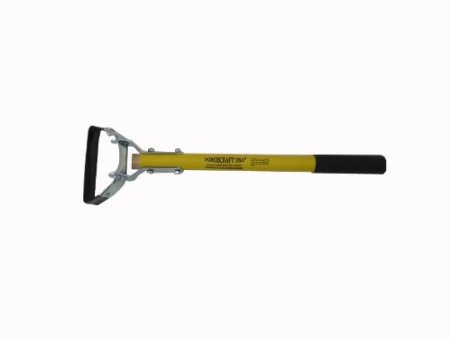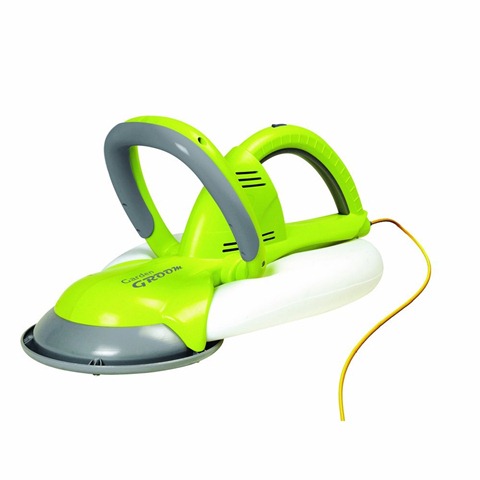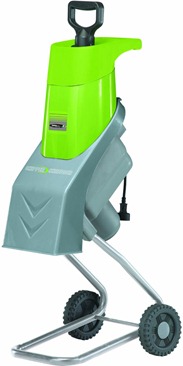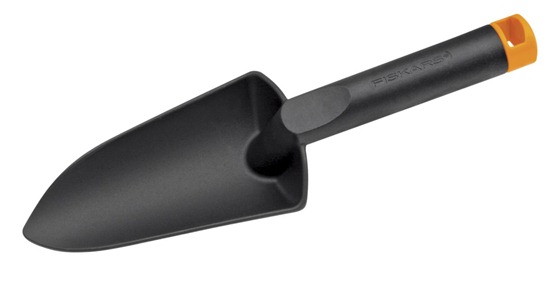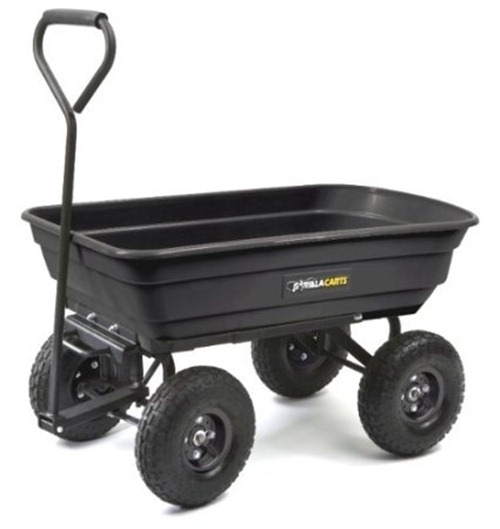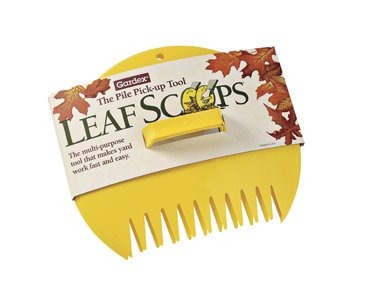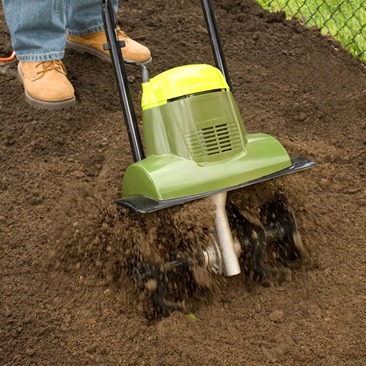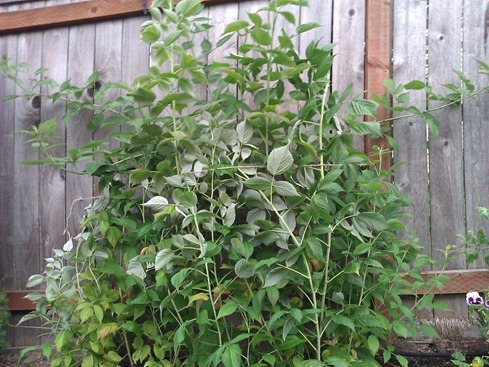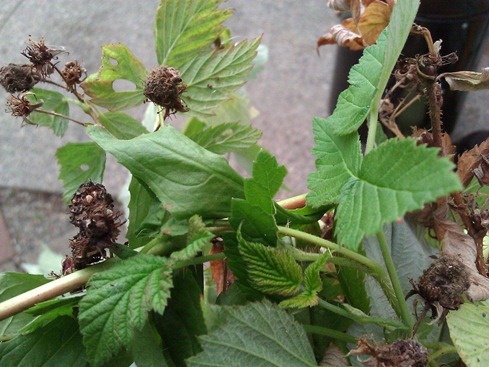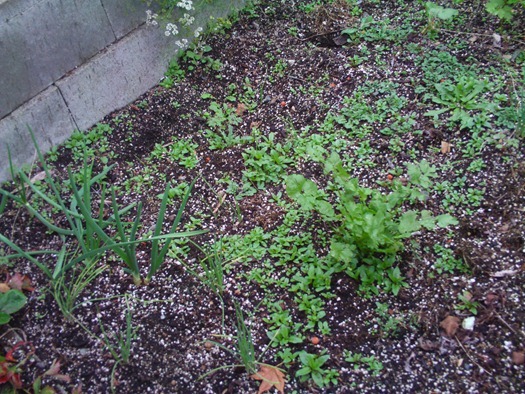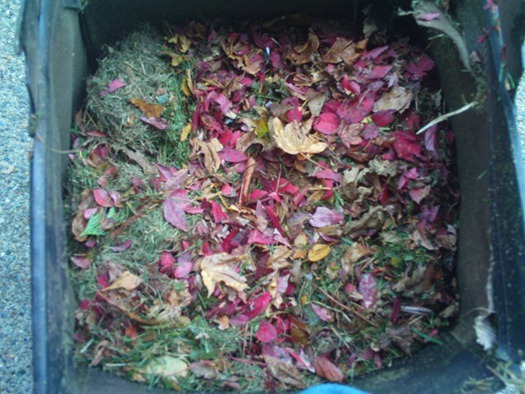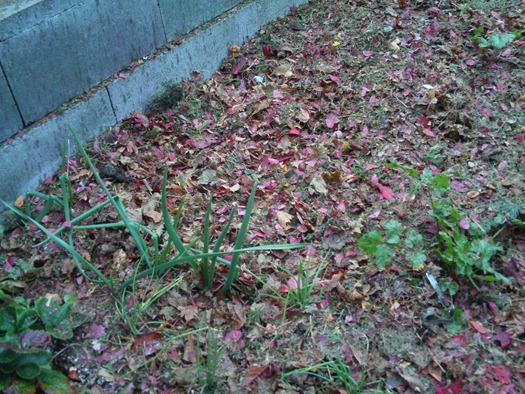How to Prepare Your Vegetable Garden for a Harsh Winter
10.5 years ago carrot, garden maintenance, guest post, kale, winter garden
According to Game of Thrones fans everywhere, winter is coming. And while this may mean snowmen, Christmas decorations and mulled wine for some, for the keen gardener it can mean fingernails bitten to the quick and sleepless nights worrying about cabbages.

Image credit: vegetable garden
Well, maybe we wouldn’t go quite that far – but after all the effort you’ve put into your vegetables, you won’t want your hard work to go to waste for next year. Fear not – we’ve got a guide on how to make sure that your vegetable garden is both ready for next year and useful throughout winter. Here’s how…
Harvest
First things first, take in all of the vegetables that are ready to be harvested and make the most of them. Make sure that you cure and store your produce properly, and you might just end up with a stash that will last all winter long!
Clear out
After you’ve collected all of your delicious vegetables but before you get started on the chutney, it’s time to clear up your yard. If you’re tempted to put this job off, think of it as a treat for your future self when you’re planting more vegetables in the spring. You’ll be glad you put the groundwork in when May rolls around! While you’re there, prepare perennial vegetables for survival by removing old foliage and stems.
Make your garden useful throughout winter
Though it may seem like all plants are dead in winter, there are a few vegetables that will actually be ready for harvesting when it’s very cold outside, so with a little preparation and clever planting you can make your garden produce food until late in the season.
- Carrots are actually sweeter when harvested after the frost. Plant them around late August or early September and cover them with straw for a little insulation.
- Plant kale and collards in mid-August and harvest young leaves from October onwards.
- It’s best to plant Spinach around four to six weeks before the first frost of winter – again, cover with straw, then harvest in late winter or early spring.
- November is the ideal time to plant overwintering onions.
- Don’t have space in the pantry for all of your produce? Don’t worry – your garden can act as a fridge. Bury cabbages, with their roots still attached and a marker in the soil above so you don’t lose them, and dig them up when you fancy bubble and squeak. Potatoes and carrots will also keep when buried in the garden, but add some straw over the top to protect them.
- Give your vegetables lots of compost and a layer of mulch, for nutrients and protection. And, while the soil is a great protector for vegetables – especially root vegetables – it won’t hurt to give them a little water before a big freeze, when it may be difficult for your plants to reach water. However, be wary of over-watering, which can lead to cold, soggy roots and very unhappy plants.
Plant a cover crop
You may not be using your whole garden to grow overwintering vegetables, so to keep your soil ship shape and ready for spring it’s a good idea to plant a cover crop such as buckwheat or rye. These plants will suppress weed growth, feed bees and keep soil in place, then they’ll act as a ‘green manure’ for your garden by breaking down and providing your soil with lots of lovely nutrients.
About The Author
This guest post was written by Ricky Peterson. Ricky is a keen gardener and loves spending time outdoors, he works at Swallow Aquatics, who sell various pond and garden supplies. Ricky also likes to travel and loves hiking and climbing.
Smart Garden Tools Need Smart Storage
10.9 years ago garden maintenance, garden planning

There’s nothing more gratifying on a sunny winter’s morning than going to the basement or garage and stepping on a rake. Yes, the joy of watching that well-worn hickory handle swing up and catch you right in the coffee cup (and then the nose) is an experience underappreciated by those who don’t garden. But what really makes the experience is dumping that hot coffee onto one of your expensive circuit boards.
There’s nothing more gratifying on a sunny winter’s morning than going to the basement or garage and stepping on a rake. Yes, the joy of watching that well-worn hickory handle swing up and catch you right in the coffee cup (and then the nose) is an experience underappreciated by those who don’t garden. But what really makes the experience is dumping that hot coffee onto one of your expensive circuit boards.
Of course, that’s all purely facetious. Unfortunately, it can be all too real for some of us who lack good storage space for our off-season garden needs – many residents in warmer, seasonal cities like Cincinnati struggle with effective organization and protection for their garden equipment. For most of us, the only climate controlled storage we have is where we store ourselves–the ol’ hacienda.
Shovels, cultivators, chemicals, and our own array of homemade tools accumulate quickly and have to go somewhere. Plus, most people don’t want all those items underfoot for several months a year. So in general, we find a rain-resistant place to store everything outside, and maybe do a little rehab work come spring.
However, the smart gardener today uses the thinker as much as the tiller. Greater technology in irrigation management, temperature monitoring, and humidity observations means that, at season’s end, we now have some very expensive and fragile equipment that needs someplace to go until the first light of spring.
Scientific instruments like these can tolerate significant meteorological swings. Store-bought ones will include advice on acceptable temperature and humidity ranges. Those you’ve made at home will provide that information on the individual components you’ve bought. And even within their accepted ranges, they all have issues with calibration.
Your hand tools shouldn’t be, well, left out in the cold either. You may have hundreds of dollars’ worth of them, shivering in the December chill like Washington’s troops crossing the Delaware. Keeping them in a warm place preserves your investment for the long haul.
Your power equipment needs good care as well. As smart as we garden now, we do still use the internal combustion engine quite a bit. These aren’t as sensitive to cold and moisture as electronics, of course, but the guts of your tiller do not fare well if your 2012 gasoline is still in there in 2013.
The best thing to do? You can buy gas stabilizer and pour it in the tank, or simply run the machine during its last use of the season until it is out of gas. You can till something, or just stand there and let it run. The same goes for string trimmers, mowers, pressure washers, and all gas-powered machinery.
Good climate controlled storage can also allow you to grow produce year-round, if you take a few steps to plan for it. Apart from the delicious outcomes, you will also find yourself in a horticultural state of mind all year. That makes you a more curious and creative gardener.
So take those cool fall days as the last vines are drying and organize some available space in your home to preserve your tools, nurture your plants, and protect your feet.
Doing a Garden Makeover or Building from Scratch? Here are the Tools You’ll Need
11.1 years ago garden maintenance, garden planning, guest post
The first tool, and perhaps the most important tool for any project, is a solid plan of action. The list of tools needed for a garden makeover or for building a garden from scratch will change slightly depending on your plan. The term garden encompasses many different outcomes.
This article focuses on the tools needed to build a vegetable garden. Plan your garden in accords with what you consume and with ideas that suite plants that grow in your area. Consider seasonal changes and whether or not your garden will need a greenhouse or a hoop house for extending your gardens growing season.
Giving your garden shape:
The second set of tools that are important are a ball of twine and marking stakes. These two tools allow your garden to move from one dimensional planning into a three dimensional form. Stake out the area that will become your garden and then stake out any features that you might consider putting into the garden. These may include raised beds, pathways, irrigation/hose bibs, a greenhouse, and a planting table. Using twine and stakes allows the gardener to see exactly how space is going to be used, and it breaks up a large project into manageable pieces.
Implementing Garden Elements:
The third set of tools that you will need to focus on are the tools that will actually help you begin to create the elements that make up your garden plan.
If you are creating raised beds than you will need a saw, a drill, and wrenches/hammer for fastening the wood pieces together. You might also consider buying a raised garden bed kit.
If your garden plan calls for an in-ground garden, then you will need a sturdy shovel and perhaps a tiller for turning the earth. It is also recommended that you use a soil screen and a wheelbarrow for sifting the soil. Most experts agree that an in-ground garden needs to be dug down to a minimum of 18 inches. Expert gardens may dig down to 2 feet and replace the bottom six inches of soil with compost/manure.
Sifting the soil helps to promote root growth from plants, especially root crops such as carrots and potatoes. Note: Even with a tiller, a shovel is still needed to dig down deep enough to create a productive in-ground garden. For raised beds do not forget to factor in the cost of soil, to fill them. Long term projects can recycle aged compost in to new beds to help build up soil levels over time. This is not only free it improves soil composition for plants. If your garden plan calls for yearly expansion, then consider building the raised beds first, planting a cover crop and using garden produced compost to fill them over time.
Standard Garden tools:
A sturdy wheelbarrow, shovel, hoe, a bow rake, and hand tools for weeding amid your vegetables are all that are necessary for maintaining a garden. This means that the cost of buying tools to start a garden is a relatively low cost investment. Even the creation of a compost-system can be done free of charge. It is a wonder that more people do not take up gardening as both a means of producing food and as a hobby.
After all, nothing is a better return on your time investment than a vegetable garden. It continues to produce regardless of the economy, and when recession hits, its value outshines even the best investment.
About the Author: Thad works with O’Connor’s Lawn—Your source for riding lawn mowers . Thad is an outdoor enthusiast who enjoys writing about landscaping and lawn care.
How good are the latest gardening tools? Let’s talk
11.2 years ago garden maintenance, garden sheers, gardening tools, guest post
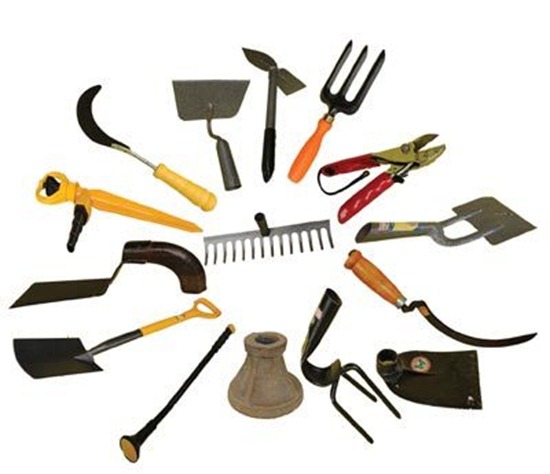
For true garden lovers, taking care of their yard is more than just an everyday task. Hard-working garden owners take pride in their yards, and with the necessary tools in their garage, they find it easier to make their yard look fantastic. Here is a list of the latest gardening tools that help to keep your yard in tiptop shape.
Hula Hoe
Hoes help you to make rows, dig furrows, loosen the soil and kill weeds. This tool is also known as stirrup hoe that makes weeding an easy job. The stirrup hoe is a long-handled tool that makes you work easily without too much bending. Its blade oscillates to and fro like the hips of a hula dancer. This oscillating blade also helps to slice weed roots below the soil surface. Since the blade swivels to and fro it cuts on both pull and push stroke, making it easy to handle in closed spaces between plants and along the edge of flower beds. When the blade starts losing its sharpness you have to replace it with a new one.
Shovels
A good long-handled shovel is used for mixing large quantities of dirt, compost, soil and other related materials. The long handles of the shovel minimize strain on your back and shoulders. The handle is slightly tilted so that your hand remains in a natural position thereby reducing the pressure on hand and wrist. You can also use the shovel for planting trees and shrubs.
Electric Garden Groom
You no longer need to waste time cleaning up hedge trimmings than trimming them. Garden groom is a wonderful invention that is ergonomically designed to trim your hedge. The groom uses its big rotary blade for trimming and collects all the cuttings in its built-in-cavity bag to keep your yard free from debris. Thus the tool makes disposal easy without requiring you to sweep up afterwards which is the most labor intensive part.
Gas powered three-in-one Push Lawn Mower
Ideal for smaller garden, the compact design is easy to handle in closed spaces and features three-in-one cutting system that includes side discharge option, mulching and a rear bag collection. Simply fold the handle and keep it aside when not in use. Its mulching option returns the essential nutrients back into the soil resulting in a healthier and greener lawn. You can adjust the height of the handle for more comfortable pushing. Overall the Lawn mower is designed to be an user-friendly tool.
Electric chipper or shredder
This machine powered with electricity makes quick work out of leaves, pruned branches and plant debris. Converts your garden’s rubbish into beautiful munch or compost material thus saving your job of reduce, reuse and recycle. Its lightweight design makes you comfortable in moving it around the yard. The machine is also provided with a safety hopper lock that stops the motor from operating when opened. So there are no more smoky fumes in your garden.
Hand Trowel
Trowels are ideal for digging holes in garden beds; planting small annuals, herbs and vegetables; planting container gardens and mixing soil with compost, fertilizer and other potting mixes. Look for the latest one piece design where the handle will always stay firmly with the head as you take it deep into tough soil. The latest versions have an easy-to-grasp handle. Overall it offers a hassle free performance.
Hand Pruners
Hand pruners are of two types: the anvil type with a deep sap groove and the bypass type which functions like scissors. Anvil pruners do not require much of hand pressure and is easy to cut. Bypass pruners functions well in tighter spaces. Both the models can be used to cut branches up to 1 inch in diameter. The sap groove prevents the blade from sticking when used to cut sappy wood. Hand pruners reduce pressure and impact on wrists. If you take proper care then these pruners will last longer.
Bulb Planters
This tool can be used to make a perfect hole for planting bulbs and other bedding plants. Its long handle saves your back and makes planting easy. For easy operation, simply moisten the soil before planting. Take the planter to the position where the bulb has to be placed and twist the tool to dig hole to the desired depth, then take out the tool from the hole. Now all you need to do is simply drop in seeds or bulbs without straining your back.
Wheel barrow/ Garden cart
These carts are not only used to transport heavy and bulky materials such as soil, garden debris, plants and compost but also to carry concrete mixing containers. Its light weight makes lifting and managing extremely easy. The latest carts have cushioned loop handle for comfort and powder coated steel frame for extra durability.
Poly Leaf Scoops
Poly leaf scoops can be used to pick up leaves, thorny or poisonous plant trimmings, pine needles, weeds and gum balls without harming your hands. It is also used for bedding mulch and peat moss. Poly leaf scoops are ideal for all seasons.
Electric Garden Cultivator/Tiller
Cultivators are generally used to open up and aerate the soil. The tines of this tool help in mixing of materials and loosening weed roots. If you have smaller rocks on your garden soil, no worry, the tiller kicks them out of the soil and to the top where they can be easily removed. Because of its light weight it digs very well without requiring much of man handling or intense arm and back workouts. The only thing you have to do is remove the tines after each use and clean them, which is quite an easy job.
Visit your favorite store and grab these latest tools to make gardening even more enjoyable.
About The Author: Alia is a writer blogger. She loves writing, travelling and reading books. She contributes to Joshia Pastore
Trimming the raspberry bushes
12.7 years ago garden maintenance, raspberries
This weekend I decided to clean up the yard a bit and do some of my later in the season chores a little early. One of these on the list was trimming my new (second year) raspberry bushes. The first step was getting these bushes under control, if I had a larger space I probably would build a more stable construction for better airflow and make picking easier…but given my small space I simply took a couple nails and a couple of lengths of twine and loosely supported the stems to keep them from falling over into our lawn. Finish by tying the twine around the nails and task number one is done.
The production of raspberries goes in a two year cycle. The first year you get vegetative stalks (all green no flowers or berries) and the second year these previous vegetative stalks become flowering stalks and produce nice delicious berries. During this time more vegetative stalks develop and the process repeats itself. Once a flowering stalk completes delivering all of its berries it will turn brown and die off. Taking care of these was my first task. All this requires is finding the flowing stalks and cut them at their base, easy way to go is to cut anything brown and then pull them out (using gloves is advised)
This part was pretty easy since I only have a few flowering stalks the first year but you can see from the picture above I should get a decent crop of raspberries now the plant is becoming more established.
Now I simply let the plants do their thing and when the leaves fall off I will trim them to a height of about 5 feet, next spring given them a healthy scoop of alfalfa pellets and wait for the bounty of sweetness to come in next summer.
Using leaf mulch in your garden for weed prevention
13.5 years ago garden maintenance, leaves, mulch, weed prevention, weeds
Above is unfortunately what my vegetable garden looks like, still have some cilantro, bunching onions, bulb onions, garlic, broccoli, and spinach growing but obviously I have a blanket of tiny weeds emerging with large amount of rain we have been getting. This gives me a few options:
- A. Painfully pull every weed from the garden bed…repeat
- B. Give up on my plants and just lay down some black plastic or cardboard to smother the weeds
- C. None of the above
I am going to opt for “C” on this one and go with an alternate method of applying a mulch that I am sure many of you have an abundance of at the moment…leaves.
Now you don’t want to gather your leaves and dump them on your garden bed, you need to shred the leaves. There are a couple of reasons for doing this. First it reduces surface area which allows for faster composting when you eventually work this layer into your soil next spring but also reduces the drag on the leaves to keep most of the leaves actually in your garden bed. Second this will restrict weeds from emerging, but allows leaves from emerging garlic and onions to make their way through.
Now you know why you want to shred them, now this is how you do it. Spread out your leaves on your lawn and use your lawnmower (with bagger attachment) and run over them with half of the width of your mower at a time. Now you should a nice bag of shredded leaves. You want to keep grass clippings to this mix at a minimum but a small percentage will not hurt anything.
Now take handfuls of your freshly shredded leaves and spread as a 1/3 – 3/4 inch layer over your vegetable garden. You can help out some of your less established plants by brushing off any leaves directly on top of the plants. Finish by giving the leaves a nice watering to help with the matting down process to keep the leaves in your bed and not blown all around your vegetable bed by the wind. It was raining while I was mowing my leaves and applying them so I skipped this particular step.
Using this technique you should be able to start you gardening next spring with minimal weeding, some great partially composted organic matter to work into your garden, and as an added bonus some protective mulch for your winter veggies all with materials most of use send off in our yard waste bins.

